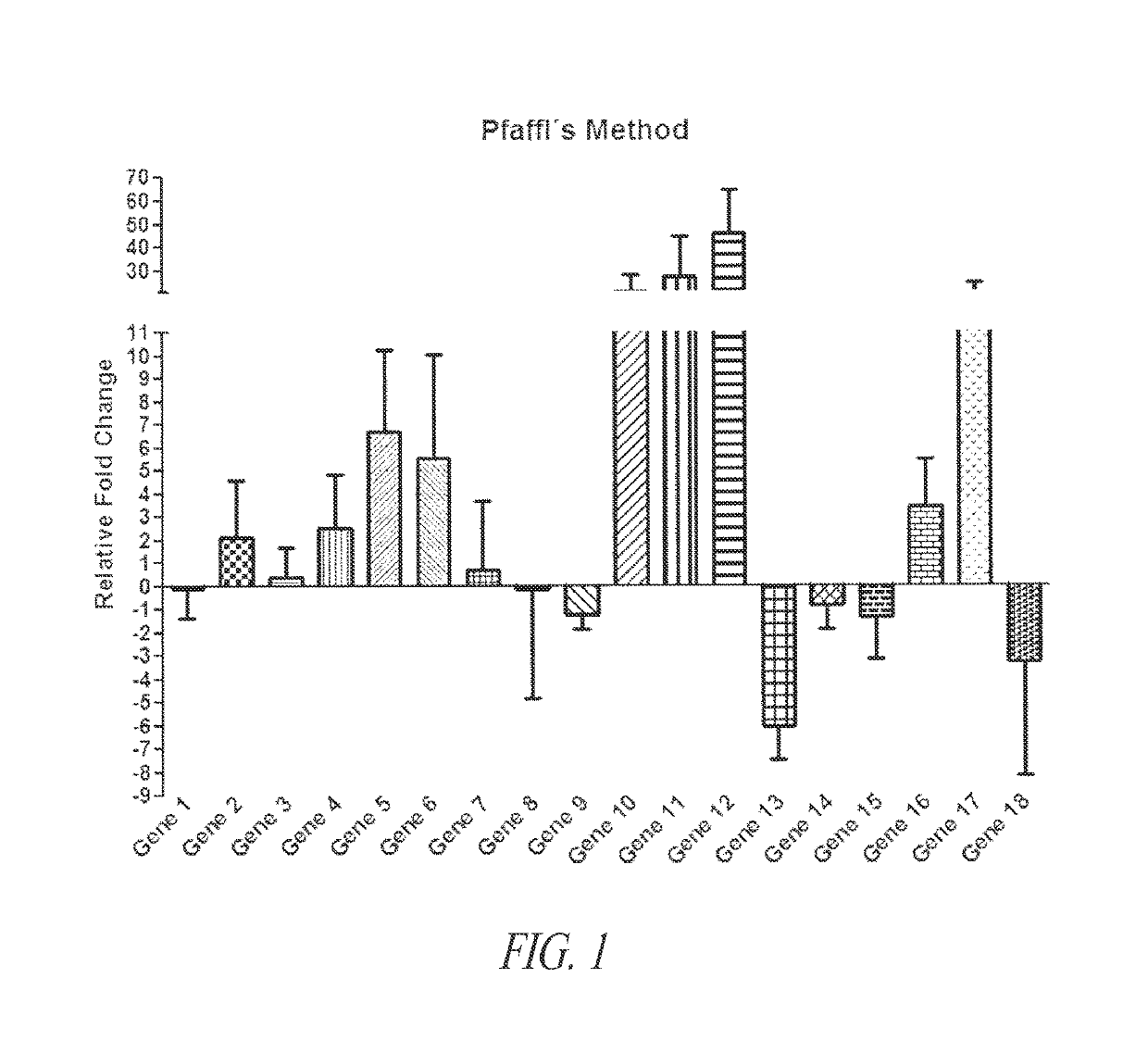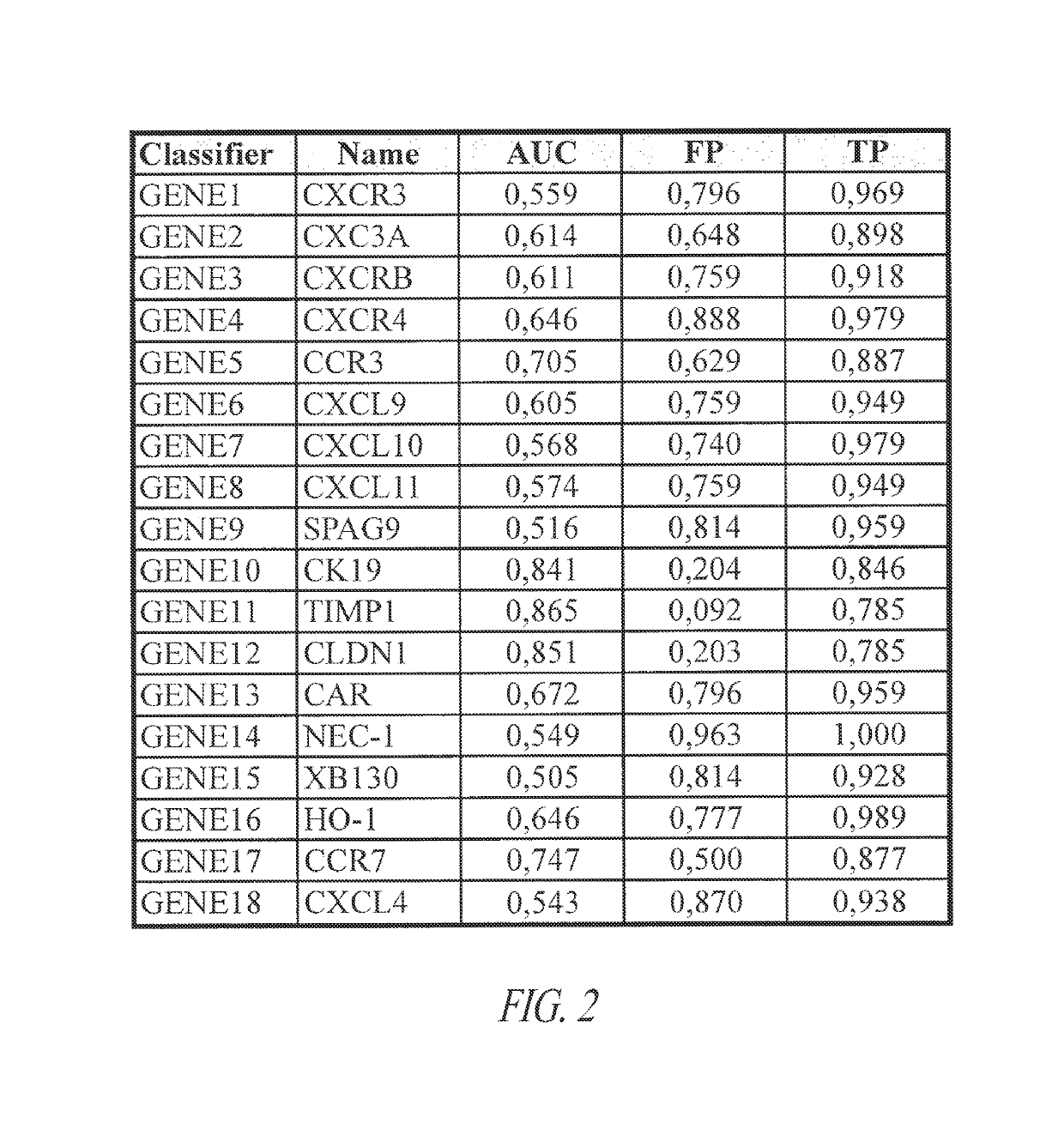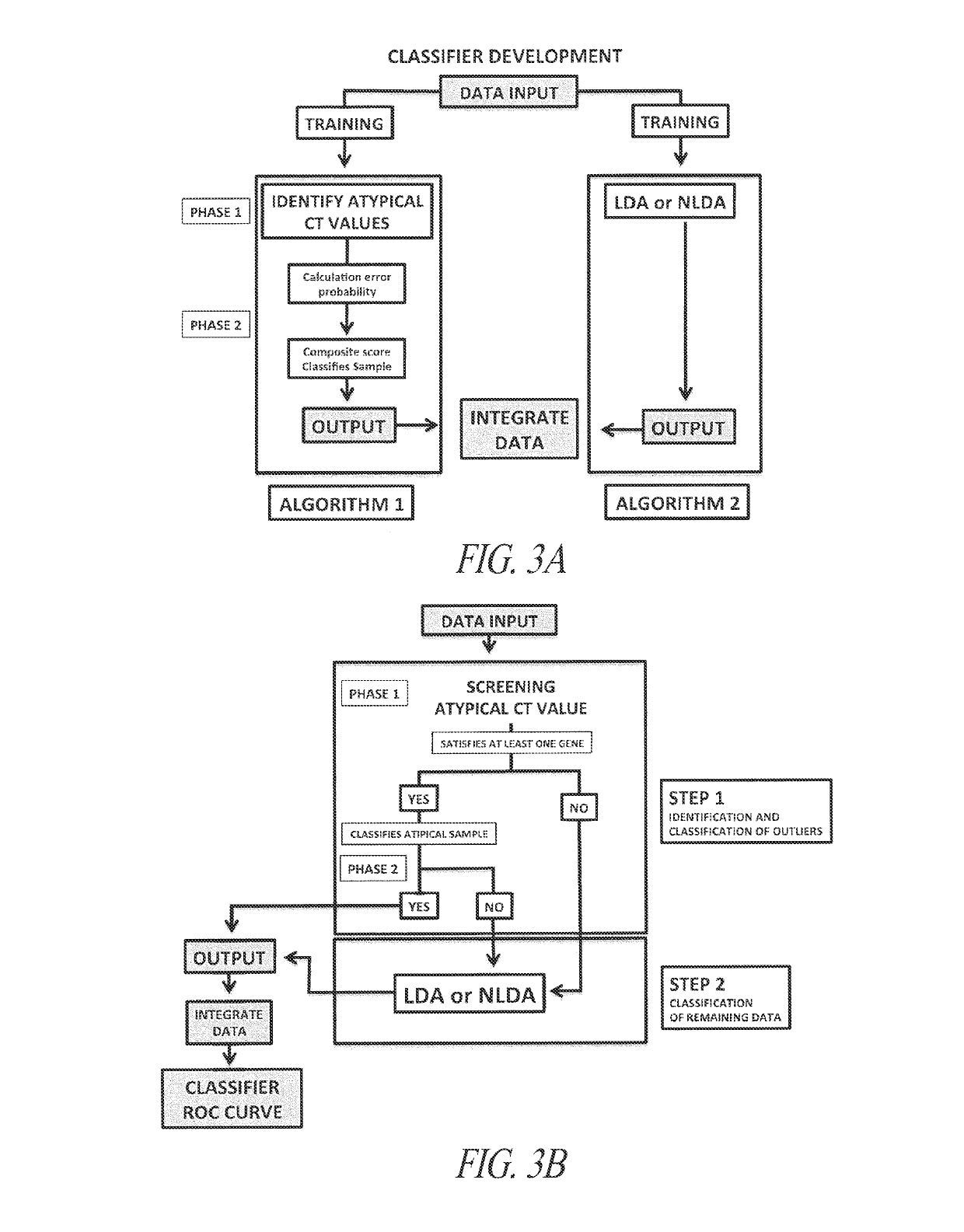Compositions and methods for diagnosing thyroid tumors
a thyroid tumor and composition technology, applied in the field of compositions and methods for diagnosing thyroid tumors, can solve the problems of inadequate clinical trial validation and correct surgical condu
- Summary
- Abstract
- Description
- Claims
- Application Information
AI Technical Summary
Problems solved by technology
Method used
Image
Examples
example 1
Selection of Genes for Diagnostic Assay
[0247]Eighteen genes pre-selected based on their relation to thyroid cancer were used to develop an improved diagnostic assay that would accurately classify indeterminate thyroid nodules as benign or cancer. These genes included CXCR3 (Gene 1), CXCR3A (Gene 2), CXCR3B (Gene 3), CXCR4 (Gene 4), CCR3 (Gene 5), CXCL9 (Gene 6), CXGL10 (Gene 7), CXCL11 (Gene 8), SPAG-9 (Gene 9), CK-19 (Gene 10), TIMP-1 (Gene 11), CLDN-1 (Gene 12), CAR (Gene 13), Nectin-1 (Gene 14), XB-130 (Gene 15). HO-1 (Gene 16), CCR7 (Gene 17), and CXCL4 (Gene 18).
[0248]As a training set, fresh snap frozen thyroid tissue samples from both malignant and benign thyroid nodules were collected prospectively in the operating room (n=156), including 100 thyroid carcinomas and 56 benign thyroid nodules. Subtypes of thyroid cancer included papillary thyroid carcinoma (PTC) usual type (56), follicular variant (22), diffuse sclerosing (8) and follicular carcinoma (FC) (14). Benign nodules ...
example 2
Development of Diagnostic Assays
[0251]A multi-gene classifying test (gene signature), which maximizes the sensitivity / specificity relationship, reaching both positive predictive values (PPV) and negative predictive values (NPV) greater than 90% was used. Criteria for selecting optimal sets of genes to use in classifiers were: AUC greater than 0.97, with both sensitivity and specificity values greater than 92% and 90%, respectively; the gene classifier should be robust and withstand atypical gene profile variations without overfitting. In addition, the signature should use a small set of genes, thus allowing a simple kit to be used in a point of care diagnostic setting such as pathology laboratories. To meet these criteria, separate algorithms were trained; the first one identified and classified samples with atypical (outlier) CT values, and second one classified samples with non-atypical CT values (FIG. 3A). To integrate output data from both algorithms, the data obtained from the ...
example 3
Selection of Diagnostic Gene Sets
[0254]New gene classifiers generated from both LDA and NLDA strategies, as described in Example 2, were chosen based on ROC curve parameters including area under the curve (AUC), sensitivity, and specificity. Results of representative algorithms obtained by LDA (SV) and NLDA (FM72 and FM208) are shown in FIG. 4. All classifiers showed excellent performance with AUC's greater than 0.98, sensitivities ranging between 94-97.8%, and specificities between 92-99%. Most importantly, the algorithm with best performance (SV; FIG. 4) showed a positive predictive value and negative predictive value of 95.8% and 96.1%, respectively (FIG. 7).
[0255]Although the three genes with best individual performance (CK19, TIMP-1, CLDN1) have been previously shown to be strong biomarkers for thyroid cancer, their combination alone did not account for the performance of these new algorithms. To demonstrate this, these genes, both individually and combined together using the s...
PUM
| Property | Measurement | Unit |
|---|---|---|
| pH | aaaaa | aaaaa |
| temperature | aaaaa | aaaaa |
| temperature | aaaaa | aaaaa |
Abstract
Description
Claims
Application Information
 Login to View More
Login to View More - R&D
- Intellectual Property
- Life Sciences
- Materials
- Tech Scout
- Unparalleled Data Quality
- Higher Quality Content
- 60% Fewer Hallucinations
Browse by: Latest US Patents, China's latest patents, Technical Efficacy Thesaurus, Application Domain, Technology Topic, Popular Technical Reports.
© 2025 PatSnap. All rights reserved.Legal|Privacy policy|Modern Slavery Act Transparency Statement|Sitemap|About US| Contact US: help@patsnap.com



